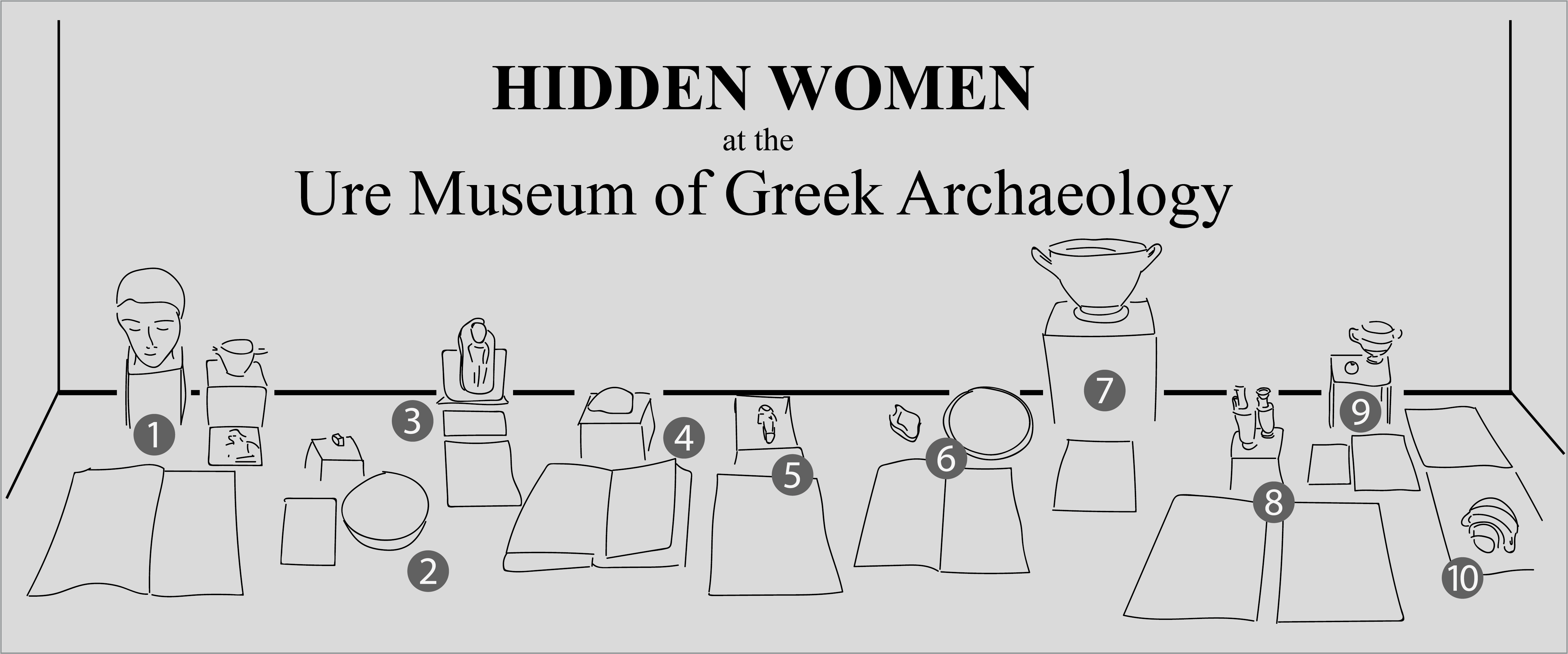Hilda (Urlin) Petrie had a long-standing interest in history and science from childhood. As a teenager, she took geology classes at King’s College Ladies Department. She modelled for noted Arts and Crafts artist Henry Holiday‘s painting Aspasia on the Pnyx (1888), set in ancient Athens. Eight years later, Holiday introduced her to William Matthew Flinders Petrie, an archaeologist and Professor of Egyptology at University College London (UCL hereafter).
After her marriage to Petrie in 1897, Hilda spent nearly every winter on-site in Egypt (and later British Mandate Palestine) excavating alongside her husband and various students. She also played a critical role in fundraising for the Petries’ excavations and training schemes and by the 1920s was also giving talks on ancient Egypt on BBC radio.
OBJECTS
1 Romano-Egyptian dice, believed to be made from ivory; pips are engraved dots surrounded by circles filled with pigment, with side six featuring twelve engravings. 30BC – AD 395. Donation of H Petrie, 1909 or 1910 [Ure Museum E.62.16]
2 Middle Kingdom terracotta bowl, 12th Dynasty, 1991- 1786 BC. From Petrie’s excavations at Dendereh. Donation of H Petrie, 1909 or 1910 [Ure Museum E.62.37].
ARCHIVE
Reproduced photograph of Hilda Urlin Petrie [courtesy of the Petrie Museum of Egyptian Archaeology, UCL].
Further Reading
Drower, Margaret. Hilda Mary Isobel Petrie nee Urlin. Breaking Boundaries: Women in Old School Archaeology Digital project. Brown University.
Sparks, Rachael 2013. PUBLICISING PETRIE: Financing Fieldwork in British Mandate Palestine (1926-1938). Present Pasts 5 (1): 2: 1-15.
Move on to Ellen (Exall) Barry.
Go back to Annie Dunman (Hunt) Ure.


